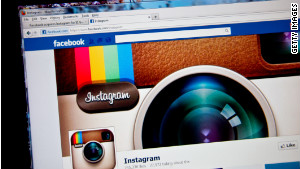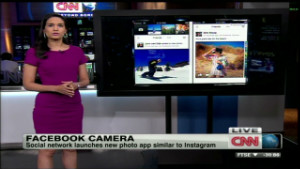(CNN) -- "Batman 2: DC Super Heroes" is a blocky-looking comic book come to life, with an open world for exploring, more new heroes and villains, and (for the first time ever) actual dialogue from LEGO characters.
Batman and Robin return from their adventures in the original title to take on major baddies with a little help from their friends. The story takes place in Gotham City, where the Joker and Lex Luthor decide the best way to rig a presidential election in Luthor's favor is to drug everyone with Joker gas.
The campaign takes players through several different set pieces, but also allows for free roaming throughout Gotham City in between the missions. Everything is built with LEGOs, which means nearly everything can be broken into blocks and bits, the currency of the LEGO world.
Break more things, get more bits, as well as access to more vehicles, heroes and villians.
The story is fun and brings in Superman as a playable character. The Man of Steel is (no surprise) really powerful and can fly, which makes some of the puzzles a little easier than they should be. Obviously, there is Kryptonite in the game and he gets weakened -- so much that he's almost a hindrance at times.
Batman and Robin can use special suits to grant them unique powers during the missions. Batman can be stealthy, powerful or electrified depending on his suit, while Robin gets aerobatic, cold powers or a hazmat suit with vacuuming powers.
Each scene has special items to be collected -- but you aren't going to get everything on the first playthrough. The set pieces are designed for players to come back with new characters and find areas that were previously unavailable to them.
The dialogue, which LEGO says is a first in its video-game franchise, is great, even if it is slightly exaggerated in its tone, even for comic-book characters. Batman is extra broody; Robin is extra peppy; Superman is extra nice. In previous games, LEGO characters grunted or emoted instead of speaking words.
Some of the voices may be recognizable to those who have watched cartoons. Clancy Brown provides the voice of Lex Luthor in the game, just as he's done for the "Justice League," "The Batman" and "Superman" cartoons. Tara Strong, Claudia Black, Nolan North and many other strong voices offer depth and meaning to the dialogue.
The speech only comes during "cut scenes" between the action. That's fine, because I have a feeling we'd be hearing a lot of the same battle cries during a fight, which would get old in a hurry.
Bruce Wayne's faithful butler, Alfred, also makes an appearance as the icon that gives you things, helps players figure out new powers or tips them off on what to do next. He's pretty persistent, so do what he says or he'll repeat himself often.
Toward the end of the campaign, members of the Justice League join Batman and Superman (and Robin) to put an end to the reign of terror in Gotham City. Wonder Woman, Flash (my favorite), Green Lantern and Cyborg all become playable characters, each with special powers.
At one point in the game, six different characters were on the screen. While players can switch to any character they see during gameplay, it got a bit crowded when a puzzle required a specific ability. For example, if I needed super strength to pull open a robot's chest, I had to track down Cyborg or Wonder Woman and stand next to them to switch. Not a deal-breaker, but it did create a little delay in the action.
But what to do once the campaign is finished? Sure, you could go back through and collect all the items you missed along the way. But you can also venture outside into the open spaces of Gotham City to see what there is to find.
There are locations in the open world marked by spotlights that direct players to special items, like connections to the Batcomputer or new heroes and villains. Those heroes and villains can be "bought" using bits. There are a whopping 50 DC Comics characters, and 10 other characters, available to be found and used.
Special items and adventures are available out here as well. If you are a completionist gamer who has to earn a perfect 100% for the game to be rewarding, you'll spend a lot of time running around Gotham City looking for items.
The one major criticism I have is how characters move in the open world. Players can use vehicles if they want, but if they choose to walk or fly, the LEGO character will automatically speed up and make it difficult to control. I understand why developers saw the need to make characters run (there is a lot of ground to cover), but I wish they would have made a button to run instead of making it automatic. Collecting bits in the open world requires a bit of touch, which is lost when the character breaks out into a full sprint.
Drop-in/drop-out co-op play makes it easy to share the fun with a friend. Just make sure they don't turn on you and start using their powers on you instead of the bad guys (It was a mistake, of course!).
Overall, the vocal quips and additional characters are enough to make "LEGO Batman 2: DC Super Heroes" worth playing. The cuteness of the LEGO characters combined with the "seriousness" of the Joker and Lex Luthor make for quite a contrast.
Open-world exploring offers players the chance to fully utilize all the characters in the game. Superman is a bit overpowered during freeplay (can't be hurt, just flies everywhere) since there isn't Kryptonite just laying around, but it doesn't affect the game unless you want it to.
And of course, as with pretty much every super hero movie, there is a special teaser reveal at the end of the campaign mode. Bring on the next LEGO superhero game!
"LEGO Batman 2: DC Super Heroes" is available now in North America and on June 22 in Europe and June 27 in Australia. It is available for the Xbox 360, PlayStation 3, Wii, Nintendo DS, Nintendo 3DS, PlayStation Vita and PC. The game is rated E 10+ for everyone 10 years of age and older due to cartoon violence. This review was done with a provided copy for the Xbox 360.







 Instagram: Future of mobile photography?
Instagram: Future of mobile photography?  Three reasons Facebook bought Instagram
Three reasons Facebook bought Instagram  Instagram or Facebook Camera?
Instagram or Facebook Camera? 